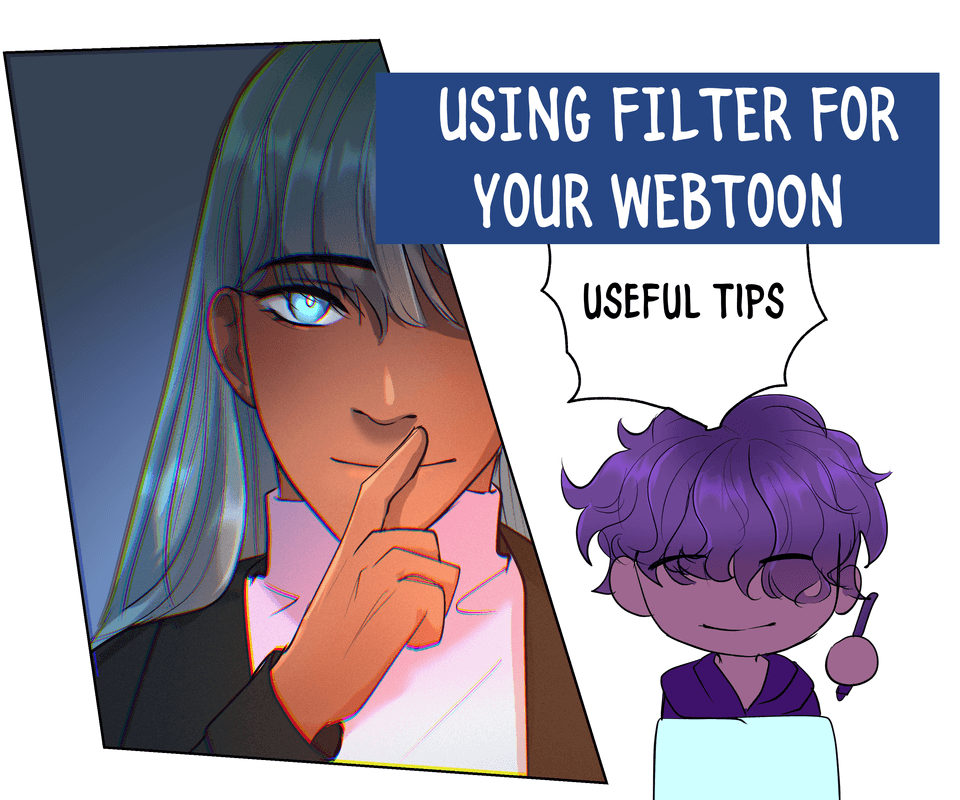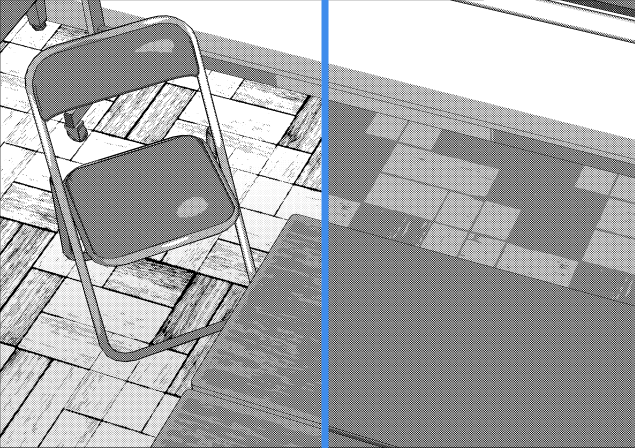Composition Tips for Storytelling
Hello! My name is Liz Staley and I’m a long-time user of Clip Studio Paint (I started using the program back when it was known as Manga Studio 4!). I was a beta-tester on the Manga Studio 5 program and for Clip Studio Paint, and I have written three books and several video courses about the program. Many of you probably know my name from those books, in fact. I write weekly posts on Graphixly.com and on CSP Tips, so be sure to come back every week to learn more Clip Studio Tips and Tricks from me!
Knowing some tips for composition can make your illustrations go from bland to interesting. Poor compositions can be confusing to look at as they may make the focal point of the image difficult to find. A good composition should be interesting and draw the eye to the important part of the illustration. So let’s look at a few tips for creating better compositions in your images.
In this article we will cover the following topics:
The Rule of Thirds
Golden Ratio
Focal Lines
Point of View
Color Compliments
Negative Space
Change the Angle
Let’s look at some compositions!
The Rule of Thirds
This is probably the composition advice that most people are familiar with, but it’s a good one to commit to memory! The rule of thirds states that if an image is divided into thirds vertically and horizontally, important parts of the image will look best if placed along one of the thirds lines (and not directly in the center).
In the composition below, the figure is placed along one of the vertical third lines. The top horizontal third also draws the eye from the character’s face across to the sign on the building in the background.
(By the way, Adrastus is the name of an unfinished webcomic that I worked on for about 10 years and created over 500 pages for. I no longer own the website that it was once published on, and the only place to read the comic now is to get the complete collection from my Gumroad page: https://lizstaley.gumroad.com/l/AIvQ I will be using various images from this comic in this article so wanted to make it clear to NOT try to go to the old website because I no longer control the content on that domain!)
The Golden Ratio
The Golden Ratio is a mathematical expression that was created by the Greeks. This mathematical equation can be visualized as a spiral. This ratio is so often found in nature that we humans often use it in visual expression without realizing it! By placing elements along the spiral, we can naturally lead the viewer's eye through the image. In the example below note that the character’s foot is placed at the start of the spiral. As the eye goes down, the rest of the character follows the curve of the spiral.
In the next example, the shadow creature provides the flow into the spiral. The character’s hands, which are bright against the black of the cloak, lead the eye in and around the image.
Focal Lines
Using lines, whether implied or actual lines in the drawing, can draw the viewer’s eyes to the focal point. For instance, you may use a horizon line and the angle of a sail to draw the eye in a boat scene. Or, in the example below, the line of the leg, arms, and even the implied lines of the background elements draw the eye toward the character’s face.
Use lines of buildings, arms, weapons, lights, and more to point toward the subject.
Point of View
Placing your “camera angle” at a high or low angle can add a bit of drama to a piece. For instance, to create a sense of hopelessness and being overpowered, you can draw a character looming over another. By placing one character above the middle line of the image and looking up at them slightly, they look more powerful and like they are more of a threat to the lower character.
High-angle shots are ones that look down on a setting or a character. These are usually used to show a character being “looked down on”, but sometimes this angle can also mean power or being free. For instance, a high angle of a superhero taking off into the air while a crowd looks on from below. Or in the example below, the character defiantly lifting a fist up while smiling. Even if she is looked down on, she will still fight!
Color Compliments
You can also make your subject stand out by adding a complimentary color from the rest of the image. If the majority of the image is blue, you can put red or yellow on the subjects to bring them off the background and make them stand out. Or if the majority of the image is warm colored, you can make your subject a cool color.
In the example below the majority of the image is cool blue and white, so the female character is in red and pink. (Also the focal line of the blue scarf draws the eye across the image to the male character. He is in a more saturated blue than the background which also helps him stand out a little.)
Negative Space
Good use of negative space can really make your compositions sing. Negative space is the space around your subject(s) that is not occupied by anything. Effective use of negative space can draw the eye to the subject, balance the composition, or make the image more interesting. For instance, framing a subject with lots of negative space around them can give an air of mystery or of isolation.
In the example below I was trying to use the high angle and the negative space to convey the idea that this character feels isolated and alone, like she has no one to turn to in the world except for herself.
Change the Angle
To add more action to a scene, you can try changing the angle. Even a slight change of the angle can make a composition more exciting. The example below is fairly dynamic on the left, but compared to the version on the right where it has been zoomed in a bit and the angle has been tilted slightly to the left, it makes it just a bit more exciting. In the right-hand example the angle gives more of an impression that we are standing on the ground by the fence and the character is soaring above us.
Conclusion
This is, by no means, an exhaustive list of composition tips. In fact there are tons of fabulous tutorials with many more ways to improve your compositions. There are also composition templates, such as the rule of thirds and golden ratio, available in the Clip Studio Assets library to help you out with guidelines for your own illustrations!
For more information on CLIP Studio Paint, please visit https://www.clipstudio.net/en or https://graphixly.com















Comment